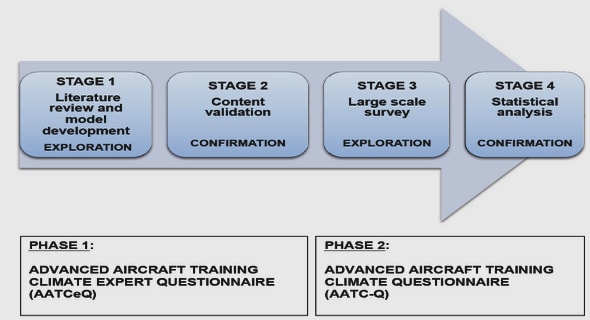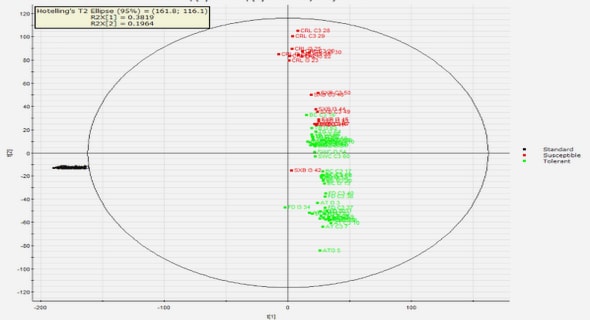Get Complete Project Material File(s) Now! »
A brief description of Louise database
The Louise database is a longitudinal database about the Swedish population, including data among others on education, income and employment. The version I have used in this study contains registered data from 1990 to 2000 but later versions have data up to 2002. The name of the database has now changed to LISA and is under development by the Swedish Central Bureau of Statistics (SCB). In this essay, however, the earlier version, Louise is used.
Louise database contains information about the following categories of variables: demography, education, income, occupation and family and household.5 The information included in Louise is based on other databases, but the structure is somewhat changed given regulations.6 Louise database is managed in SQL-server, which is a database application from Microsoft.7 The structure of the database is based on the individual, i.e. the basic unit is the individual him/herself. Other information, such as occupation as the source of income, are linked to the individual.8 In most cases, the structure of the database is tied to the calendar year.9 So if the user wants to find information e.g. on a specific immigrant group and the sex composition, the data will be provided by calendar years. The exceptions are those objects that are based on a specific date, such as marital status which is based on information from 31 December each year. In the following sub-chapter I discuss some other problems and limitations one should be aware of when using the database.
Methodological problems and limitations
Eritrea’s independence in 1991 has had some consequences for the analysis of Ethiopian immigration to Sweden during the period. The reason for this methodological problem is that Eritreans were categorized as Ethiopian emigrants during the period when Eritrea was an Ethiopian “province”. After 1991 those emigrating from Eritrea are consequently regarded as Eritrean immigrants, rather than Ethiopians. This is taken into account in the essay.
As mentioned, I have limited the study of the Ethiopian immigration to Sweden to the period between 1985 and 2000. The reason for this is that African immigration to Sweden and not least immigration from the Horn of Africa (where Ethiopia is located) was fairly low before the end of the 1980s.10 The reason for the specific end-year (2000) is that the numbers of Ethiopian immigrants by the time had decreased to approximately the same low level as before 1985, and that the used statistical material does not include information for the years after the year 2000. In the task of analysing the immigrants’ integration into the Swedish society, I have limited the study to the period between 1990 and 2000 as information on the variables that is used for this task is limited to this 10-years period.
The gross income rate used to measure the immigrants´ integration pattern in Sweden contains the gross income of those individuals who have earned an amount of more than 100 Swedish kronor per year.11 However, as the gross income in Louise also includes other tax-based compensations such as sickness benefits from the employer as well as severance payments, this measure may show a somewhat misleading picture. These compensations are though less common among the immigrants of interest. In Louise database, the gross income variable is listed under “Loneink”. Furthermore, when analysing the immigration to Sweden as well as their integration, the age of the immigrants used is not a precise measure as we don’t know the date of birth, only the year.
Human geography and Demography as tools of understanding migration
In this essay, migration is the focus by two, in many ways, collaborating study fields; Human geography and Demography. In the discipline of Human geography, human activity is considered as a variable that affects the environment just as much as the environment affects humans and their activity in an absolute and mutual relation. A central viewpoint in Human geography is that the environment and humans interact with each other.12 As a consequence, human beings and the environment shape each others uniqueness. However, some human geographers focus on the spatiality of population; they are population geographers. And since this is an essay partly within the discipline of Human geography, population geography is the main geographic approach to be used. In Demography on the other side, migration is considered as one of the three main population processes (the two others are fertility and mortality). Demographers focus on the characteristics of the demographic event in mind. To give a deeper understanding of the nature of these tools I use when approaching Ethiopian migration to Sweden, each of the study fields is described in details in the followings mainly in relation to migration.
Population geography
A major question that population geographers are interested to explore is spatiality.13 Mapping is here of great importance, since the task to observe a phenomenon taking place on the earth’s surface is of major significance when it comes to understand a specific place or the interaction between several specific places. Mapping is then also important in the task to understand population, since – as stated earlier – the environment and humans interact with each other in an absolute and mutual relationship. As a consequence, population structures must be explored in the light of this interaction. After all, the distribution of population takes place over the surface of the earth.
The reasons to why a specific population distribution takes place at a specific location can thus vary.14 A few examples of such causes are soil quality, climate, and the political and economic situation.15 By concentrating life to a place with a fertile soil and a favourable climate, humans can for example benefit more than moving to a place where these characteristics are less favourable to human needs. It is also more favourable for the migrant to move to a country with more suitable political and economic structures. Hence this will make the migration process easier than migrating to a country where these characteristics are more hostile to the migrant – or where immigration is constrained by political and economic measures.
Population geographers’ aim is thus not limited to find out the reason behind population concentrations. By studying the characteristics of population, they also explore the future characteristics of a specific place. Population geography is therefore a non-isolated field. By considering the composition of population, population geographers also integrate demography into their analyses.
Demography and migration
The relationship between demography and migration is strong. Migration is a vital event for not only the migrants themselves, but also for the society as whole. Migration is a just as strong determinant to population re-structuring as fertility and mortality. Just like the latter demographic events, migration is not an isolated phenomenon. Migration affects population structures as whole, just as much as migration patterns are influenced by other population characteristics as well as non-demographic features. One can then divide the demographic variables and the non-demographic variables in two sets; dependent variables and independent variables.17 The dependent variables can depending on the context ever be demographic or non-demographic (the demographic composition in a country may for example be dependent on the economic situation just as much as the economic situation may be dependent on the demographic composition). Both the demographic and the non-demographic variables are then consequently also independent variables since they could affect each other. Of course, demographic structures can also be affected by other demographic structures, e.g. if a large number of men immigrate to Sweden, the sex-composition will consequently be affected.
The demographic composition of international migrants has therefore vital impacts on the societal structures in both the countries of origin and the host countries. An increased emigration of younger persons in working age from a country may for example create a deficit of manpower in the country of origin. Well in the host country, these younger now immigrants may have easier to integrate because of their young and to the labour market more suitable ages. It may be harder for the older migrants to integrate since these are less likely to get an employment (as will be discussed later, employment prospects is a vital part of a successful integration process).
The sex-composition in the country of origin may be affected negatively if one of the sexes is more likely to emigrate than the other (e.g. males for economic reasons). Not only does this mean less prospects for the females (if males are more likely to emigrate) to meet a spouse and have a family (the fertility will therefore be affected), it will probably also affect the future economic situation in the country of origin since the lower fertility caused by the females` decreased chances to meet a spouse and have children will also affect the future manpower negatively. Also the host country will be affected. Males are more likely to migrate for economic reasons (hence, younger males in general are most likely to migrate) and women (and consequently also children) may tend to migrate more often because of family reasons.
Integration in Swedish immigration politics
Integration is considered as an important aspect of immigration politics. Assimilation on the other hand, despite its close relation to integration, is not considered in the Swedish immigration politics. According to the Swedish Government bill, 1997/98:16, integration is a goal in the Swedish immigration politics but the decision to integrate should be made by the individuals them selves.34 Hence, one can not force a person to integrate. Thus the process can be facilitated by e.g. specific labour market and education policy measures favourable for immigrants.35 This points to the central concern in the Swedish integration politics: to provide people the conditions to support them selves, to be part of the society and further to prevent discrimination and xenophobia and to protect fundamental democratic values.
While immigrants and the “new” society will sooner or later adapt to each other, the individual must be able to keep her/his “original” culture.37 However, as discussed before, the adaptation is mutual between the immigrants and the natives. This applies also to the assimilation to some degree, if the integration is successful. Otherwise, as discussed earlier, the tensions between the “ethnic” population and the “newcomers” stressed by the immigrants’ (eventual) low participation on the labour market (which can be seen as a failure of integration) will instead prevent such an adaptation from both sides.
Early studies about Ethiopian integration in Sweden ?
There are relatively few studies on the integration of Ethiopian immigrants, and there is hardly any concerning Sweden. However, the European Monitoring Centre on Racism and Xenophobia (EUMC) does have studies of African immigrants in Sweden (and Ethiopian immigrants belong to the group of African immigrants). African immigrants in Sweden are considered to be a group whose prospects to get a job are particularly weak. In fact, according to a report from EUMC, African immigrants are one of the most discriminated groups on the Swedish labour market.38 African immigrants are also considered to be one of the two most poorly paid migrant groups in Sweden.39 However, their proportion has increased in caring professions (according to an observation in 1999).40 There are more African women than African men in these professions, even if the men seem to catch up.
In his study about foreign born men’s prospects to optimize their incomes in USA, Chiswick found that 10 to 15 years in employment is needed to their incomes reaching the level of the native born population.41 Their incomes were lower than those of the native born population at the beginning of their staying in the USA, but increased gradually to even higher level than those of the native born population. Maybe this pattern will apply to Ethiopian immigrants in Sweden in the long run.
Table of contents :
1. Introduction
1.1. Purpose of the essay
1.2. Disposition
1.3. Methods and sources
1.3.1. A brief description of Louise database
1.4. Methodological problems and limitations
2. Human geography and Demography as tools of understanding migration
2.1. Population geography
2.2. Demography and migration
3. Migration
4. Integration
4.1. How to define integration
4.2. Integration in Swedish immigration politics
4.3. Early studies about Ethiopian integration in Sweden?
5. Ethiopia
5.1. An overview of Ethiopia’s history of modern time
5.2. Ethiopian migration – Main trends and Causes
6. Ethiopian immigration to Sweden
6.1. Age and sex-composition of Ethiopian immigrants to Sweden during 1985-2000
6.2. Summary
7. Integration of Ethiopian immigrants in Sweden, 1990-2000
7.1. Employment of Ethiopian immigrants
7.2. Income prospects among Ethiopian immigrants between 18 and 64 years of age who arrived to Sweden in 1990 and stayed until 2000
7.3. Sex-specific changes in incomes among Ethiopian immigrants between 18 and 64 years of age who arrived to Sweden in 1990 and stayed until 2000
8. Discussion and Conclusions
8.1. Conclusions
References


